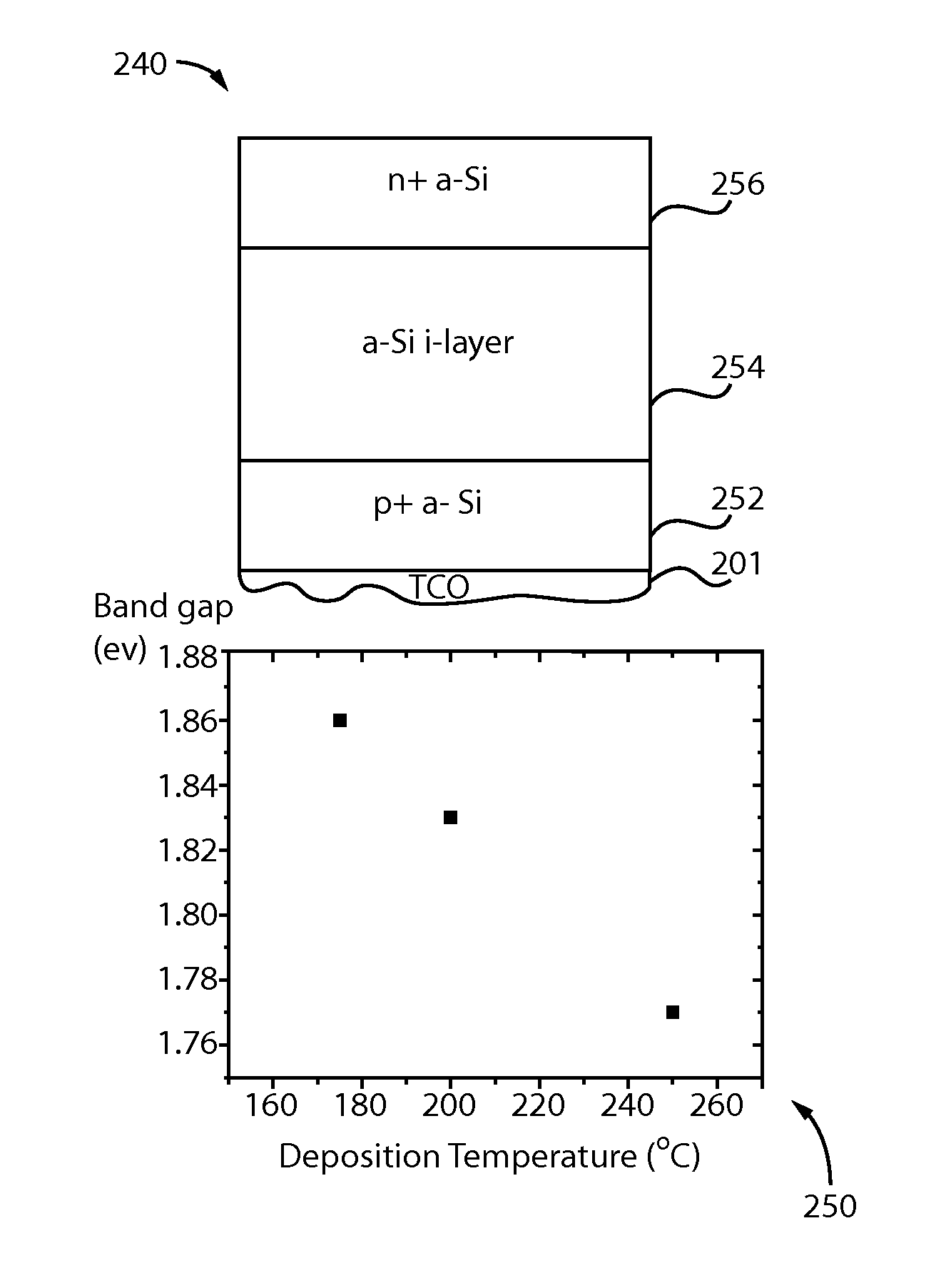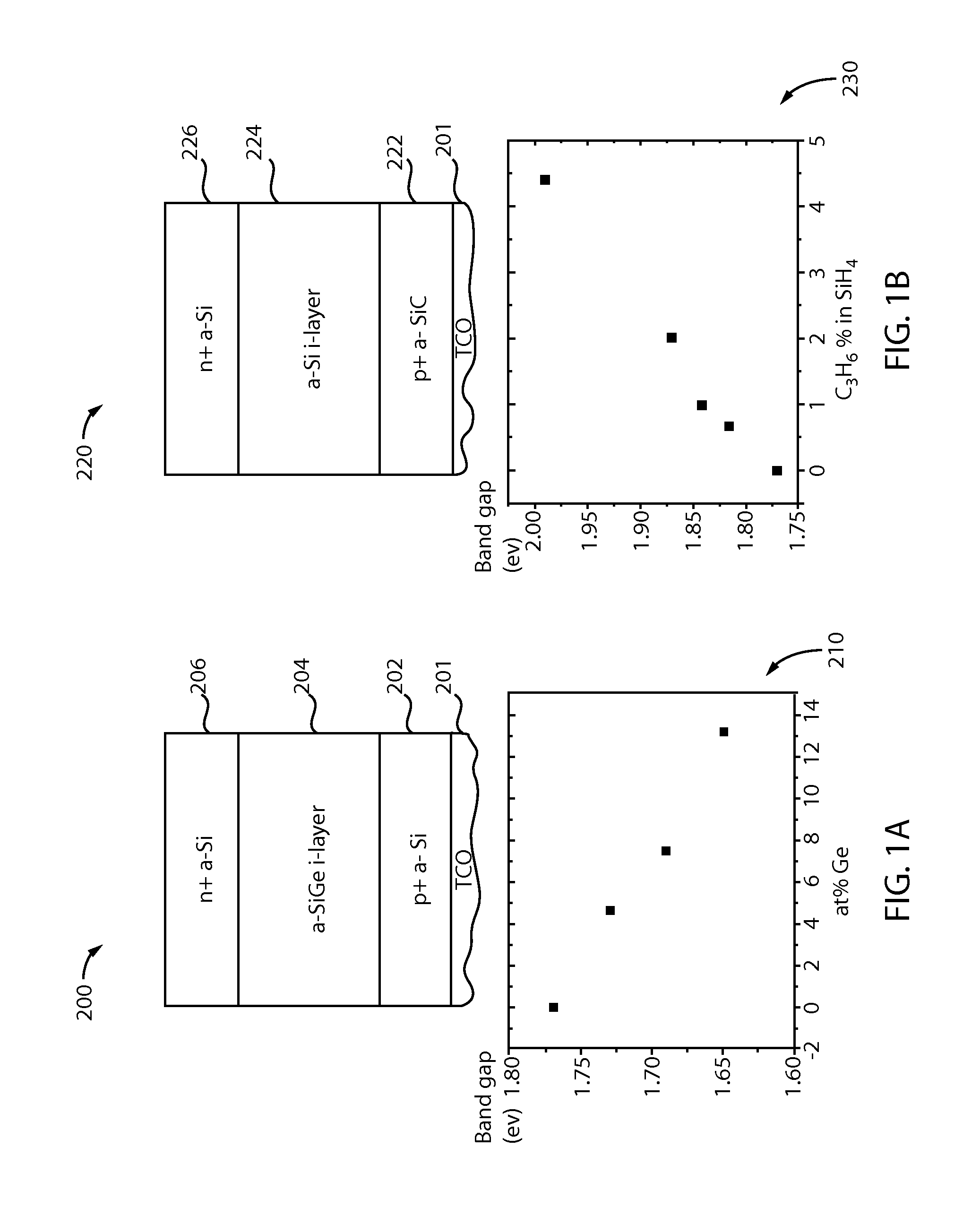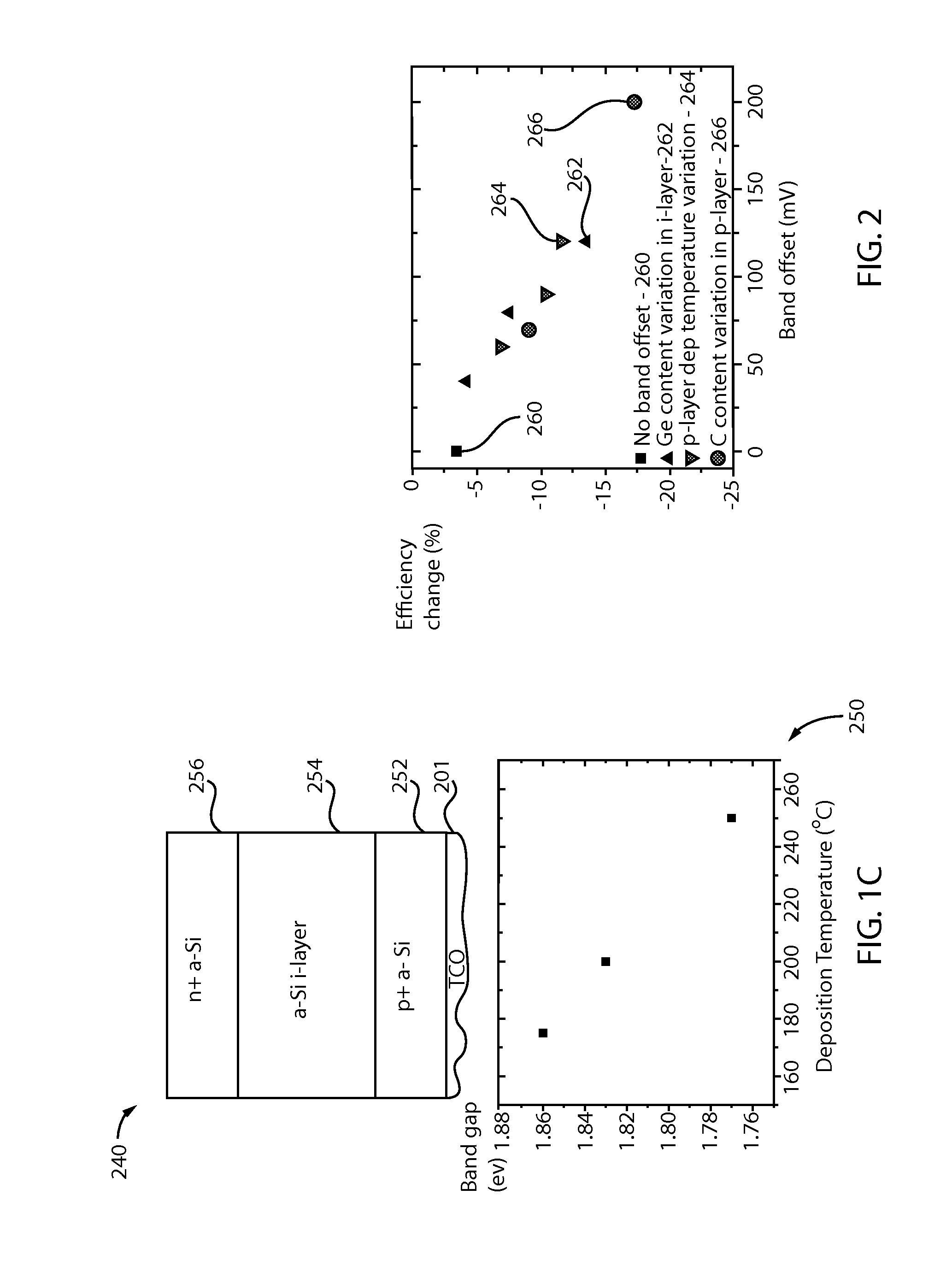Reduction of light induced degradation in thin film silicon solar cells
a thin film silicon and solar cell technology, applied in the direction of sustainable manufacturing/processing, climate sustainability, semiconductor devices, etc., can solve the problems of negatively affecting the quantity of solar cells, reducing the efficiency of solar cells, etc., to reduce the degradation of photovoltaic devices, reduce the offset of bands, and reduce the effect of light-induced degradation of devices
- Summary
- Abstract
- Description
- Claims
- Application Information
AI Technical Summary
Benefits of technology
Problems solved by technology
Method used
Image
Examples
Embodiment Construction
[0024]In accordance with the present principles, methods and devices are presented that provide light induced degradation resistance. Light induced degradation occurs in a semiconductor structure when the structure becomes saturated by incoming radiation (light soaked). The structure begins to degrade due in part to the reconfiguration of hydrogen atoms, which results in passivation and bond breaking between constituent materials. This degradation process becomes prominent if there exists a band offset at a p-i interface and / or at a transparent conductive oxide (TCO) to p+ interface—as discovered by the present inventors. This new mechanism is addressed in view of the Staebler-Wronski effect (SW effect) to provide improved solar devices. Based on this understanding, strategies for minimizing the SW effect are introduced.
[0025]Band offset at the p-i interface cannot be avoided since high band gap materials are required for the p+ layer whereas low band gap materials are desirable for...
PUM
 Login to View More
Login to View More Abstract
Description
Claims
Application Information
 Login to View More
Login to View More - R&D
- Intellectual Property
- Life Sciences
- Materials
- Tech Scout
- Unparalleled Data Quality
- Higher Quality Content
- 60% Fewer Hallucinations
Browse by: Latest US Patents, China's latest patents, Technical Efficacy Thesaurus, Application Domain, Technology Topic, Popular Technical Reports.
© 2025 PatSnap. All rights reserved.Legal|Privacy policy|Modern Slavery Act Transparency Statement|Sitemap|About US| Contact US: help@patsnap.com



